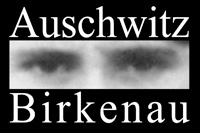




Labor
In the German concentration camp system, labor was intended to be the basic instrument for the “reeducation” and “training” of prisoners. In practice, however, and especially in the initial phase at Auschwitz, labor was an instrument of destruction and was often performed without regard for its real efficacy. Prisoners were forced to perform labor that exceeded their strength carrying bricks, sacks of cement, and concrete fence posts from rail cars to the warehouses and building sites while Kapos beat them and urged them on the whole time. They excavated drainage ditches and the foundations of buildings; they pulled heavy rollers or used wooden beams to batter down the walls of demolished houses, without any kind of protective equipment or clothing. Employment conditions improved insignificantly in 1942, when the SS began attaching greater importance to actual work performance.
Not including breaks, the working day lasted 10 to 11 hours in the spring and summer. It was reduced to 9 to 10 hours in the autumn and winter. Prisoners had a midday break to eat a meal. Theoretically, prisoners were not required to work on Sundays, but they often did additional work around the blocks or fell victim to harassment from functionaries.
